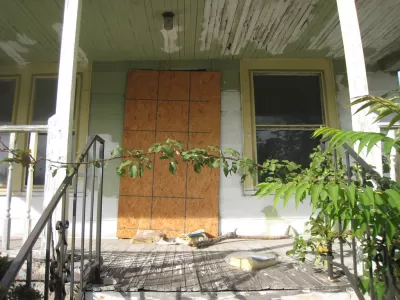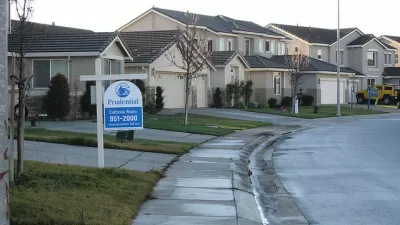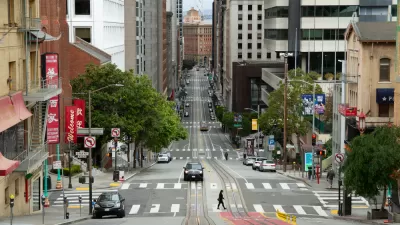National economic indicators may look good, but some areas are still clawing their way back from the 2008 recession. Cleveland's Slavic Village, an "epicenter" of the foreclosure crisis, is one of them.

In a Marketplace segment, David Brancaccio, Adrian Ma, and Katie Long look at the Great Recession's lasting effects in Cleveland. One neighborhood, Slavic Village, was hit particularly hard.
"Slavic Village became known as the epicenter of the foreclosure crisis, hit hard by subprime loans and fraudulent lenders. But the subprime crisis radiated beyond this small section of Cleveland, encompassing the greater area and state."
While the area has since recovered from the initial shock, Cuyahoga County still counts 4,000 foreclosures per year. Residents of Slavic Village, several of whom are quoted in the segment, have reacted in a mixture of ways. Some are pessimistic, but others praised the neighborhood's resilience.
See also: Distressed Suburbs Struggle to Recover From Decade-Old Recession
FULL STORY: 10 years later, Cleveland is still digging out of the foreclosure crisis

Maui's Vacation Rental Debate Turns Ugly
Verbal attacks, misinformation campaigns and fistfights plague a high-stakes debate to convert thousands of vacation rentals into long-term housing.

Planetizen Federal Action Tracker
A weekly monitor of how Trump’s orders and actions are impacting planners and planning in America.

In Urban Planning, AI Prompting Could be the New Design Thinking
Creativity has long been key to great urban design. What if we see AI as our new creative partner?

Cal Fire Chatbot Fails to Answer Basic Questions
An AI chatbot designed to provide information about wildfires can’t answer questions about evacuation orders, among other problems.

What Happens if Trump Kills Section 8?
The Trump admin aims to slash federal rental aid by nearly half and shift distribution to states. Experts warn this could spike homelessness and destabilize communities nationwide.

Sean Duffy Targets Rainbow Crosswalks in Road Safety Efforts
Despite evidence that colorful crosswalks actually improve intersection safety — and the lack of almost any crosswalks at all on the nation’s most dangerous arterial roads — U.S. Transportation Secretary Duffy is calling on states to remove them.
Urban Design for Planners 1: Software Tools
This six-course series explores essential urban design concepts using open source software and equips planners with the tools they need to participate fully in the urban design process.
Planning for Universal Design
Learn the tools for implementing Universal Design in planning regulations.
Appalachian Highlands Housing Partners
Gallatin County Department of Planning & Community Development
Heyer Gruel & Associates PA
Mpact (founded as Rail~Volution)
City of Camden Redevelopment Agency
City of Astoria
City of Portland
City of Laramie





























